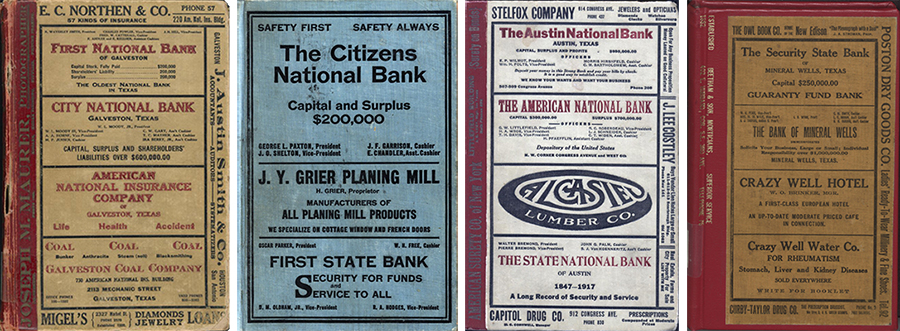Tracing city-dwelling ancestors

by Lloyd DeWitt Bockstruck
reprinted from 27 June 1992
Since 1920, more Americans have lived in cities than in rural areas. Accordingly, the possibilities of having ancestors residing in villages, towns, and cities diminishes the further back in time you look.
Finding an ancestor in an urban setting is not, however, always a blessing. The sheer numbers can be self-defeating when one begins to ferret out biographical data. Chicago, for example, had more residents in 1900 than all of North Carolina did.
Fortunately, since the Colonial period, urban areas have had directories of their inhabitants. Baltimore, Maryland, had the first. Charleston, South Carolina, had the second. Dallas’ first directory was in 1875. Fort Worth’s first appeared in 1877.

Directories can be substitutes for census records. They also supplement census records where glaring omissions occur. Entries usually are arranged in alphabetical order, showing residents’ street addresses and occupations. By comparing city directories over time, one can ascertain when a child comes of age, a wife’s surname, when a family moves, and when the husband dies.
In this century, the names of youngsters still at home are also included. If one’s forebears belonged to a minority, the possibility exists that a separate directory exists for that group. For example, Boston has an 1881 Swedish directory; Chicago, a 1903 Polish directory; Philadelphia, a 1907 “colored” directory, and Dallas, a 1947 “Negro” directory.
Before 1861, there were 1,647 known U.S. city directories.
Professor James W. Hagy, in his new book, People and Professions of Charleston, South Carolina, 1782-1802, offers a superb view of the city at the close of the 18th century. He has complied all of the names and relevant genealogical data from directories for the years 1782, 1785, 1790, 1794, 1796, 1801 and 1802, as well as the federal censuses for 1790 and 1800. He has identified more than 13,000 people who lived and worked in the city. Listings are in alphabetical order. The 112 page paperback may be ordered from Clearfield Company, Inc., for $17.50 plus $2.50 postage and handling.
U.S. city directories before 1861 are available on microfiche in the genealogy section of the J. Erik Jonsson Central Library. To determine the availability of city directories for your ancestral localities, consult Dorothea N. Spear’s Bibliography of American Directories Through 1860. Those for 1861 to 1901 have been microfilmed and may be found in major public and academic libraries. All are listed by city and year in City Directories of the United States, 1860-1901.
Keep in mind that in 1900 only 17% of the population had telephones; in 1920, only 23%. City directories, however, go back further and are more inclusive because they listed people both with and without telephones.
The Dallas Public Library has the first of the long-awaited 1920 census. The Ohio census has arrived. Because no city funding was available, the Dallas Genealogical Societies solicited contributions to buy as many as possible. Other state censuses coming are: Alabama, Arkansas, Florida, Georgia, Illinois, Indiana, Iowa, Kansas, Kentucky, Louisiana, Mississippi, Nebraska, Oklahoma, South Carolina, Tennessee Texas, and Vermont – plus the Virgin Islands.
Source:
Copyright 1998 by Dallas Genealogical Society from “Family Tree” Weekly Newspaper Columns from The Dallas Morning News 1991-1996 by Lloyd DeWitt Bockstruck
